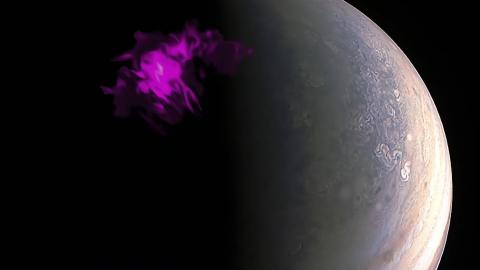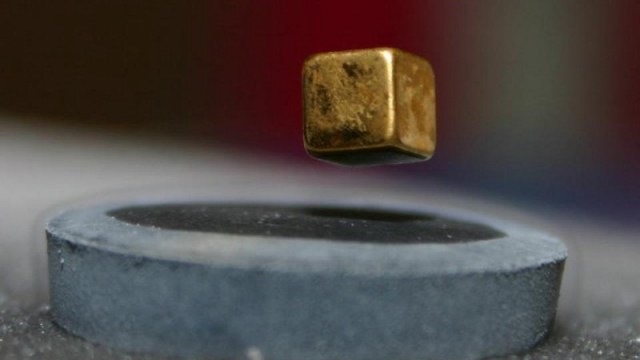Every 27 minutes, there’s an X-ray aurora on Jupiter. Here’s why.

Credit: ESA/NASA/Yao/Dunn
- For 50 years, astronomers have known that Jupiter has frequent auroral displays, but not why.
- The bursts are a combination of visible and invisible light.
- The presence of NASA’s Juno spacecraft around Jupiter allowed scientists to solve the mystery.
Here on Earth, an aurora borealis is a wondrous natural event that too few of us ever get a chance to see. Their occurrence remains unpredictable enough that a glimpse of one may remain elusive even for people who live in the United States’ northern latitudes.
Imagine, though, that you could see one every few minutes. That’s what happens at Jupiter’s north and south poles every 27 minutes. Not only that, but each auroral event blasts out enough X-ray energy to power our entire civilization. A new study, from University College London and the Chinese Academy of Science and published inScience Advances, solves the mystery of how and why this occurs.
Surfing waves of plasma

“We have seen Jupiter producing X-ray aurora for four decades,” says the study’s co-lead author William Dunn, “but we didn’t know how this happened. We only knew they were produced when ions crashed into the planet’s atmosphere.”
To unravel the mystery behind what is happening, the researchers aligned observations made over a 26-hour period by NASA’s Juno spacecraft (which orbits Jupiter) with X-ray measurements made by the European Space Agency’s XMM-Newton Observatory (which orbits Earth). Having time-aligned the two sets of observations, computer modeling revealed the mechanics behind the auroral bursts.
Jupiter has a massive magnetic field — some 20,000 times stronger than Earth’s — extending out around the planet. Plasma, or ionized gas whose atoms have been stripped of electrons as they collide with each other, races along these lines. Periodic vibrations in the magnetic field lines, the cause of which is still unknown but thought to involve interactions with the solar wind or magnetosphere, produce waves in the plasma.
Jupiter’s moon Io releases ion particles from gigantic volcanoes, which get swept up and carried along by the plasma waves, eventually smashing into Jupiter’s atmosphere. This results in the massive release of visible and invisible light, including X-rays.
Dunn says, “Now we know these ions are transported by plasma waves — an explanation that has not been proposed before, even though a similar process produces Earth’s own aurora. It could, therefore, be a universal phenomenon, present across many different environments in space.”
“Now we have identified this fundamental process, there is a wealth of possibilities for where it could be studied next,” says co-lead author Zhonghua Yao. “Similar processes likely occur around Saturn, Uranus, Neptune, and probably exoplanets as well, with different kinds of charged particles ‘surfing’ the waves.”
A black hole lab
Co-author Graziella Branduardi-Raymont says, “X-rays are typically produced by extremely powerful and violent phenomena such as black holes and neutron stars, so it seems strange that mere planets produce them too.”
Jupiter thus represents a promising research opportunity.
“We can never visit black holes,” says Branduardi-Raymont, “as they are beyond space travel, but Jupiter is on our doorstep. With the arrival of the satellite Juno into Jupiter’s orbit, astronomers now have a fantastic opportunity to study an environment that produces X-rays up close.”





